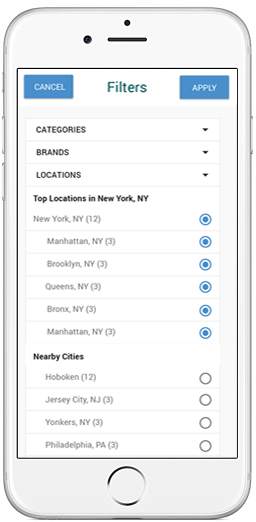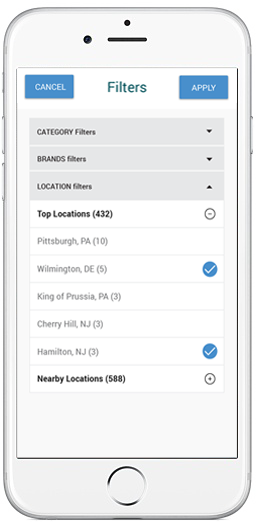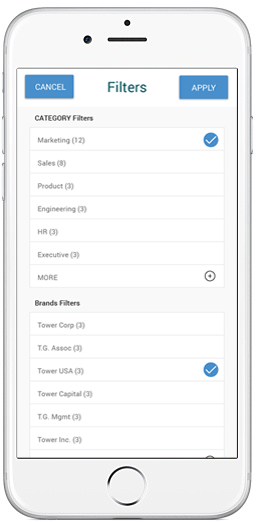The Jibe Core is a SASS suite composed of candidate experience products aimed at the enterprise market for employment and recruiting. One of the primary features is the Search functionality by which a job candidate would search for the most appropriate job to match their skill set. A major component of this interaction was the ability to filter results that were surfaced from the user's search query.
Problem
Iterate on initial designs for job-search filtering tools, enabling “fast-as-possible” search, sort and conversion.
Approach
We worked lean to ideate, test and iterate on potential solutions even as user stories were still evolving. Despite having to work through consistently revised stakeholder requests and development limitations, an elegant, functional UX solution was arrived at and verified with user testing.
Impact
The validated revised filter concept was implemented and led to an increase in conversation rate and time
Filter Comparison
Comparison of Pre-filter and Filter-added design.
Initial design without filters.
Iteration with added filter components.
Prototype, Test, Iterate
Initial designs were tested and some of the most significant insights discovered were related to the filters; both the clarity of concept and ease of use. These insights, when combined with research, led to the completion of a new design iteration with simplified filter components.
Plans for user testing.
User testing observation.
Weighted recommendation list compiled from user test results.
Revised iteration following testing that changed the “tag selection” filter style to a “check box” style.
Mobile Filter Design Iterations
The mobile design of the filter components proved to be even trickier to solve then the desktop version. Though the designs were responsive, the mobile filters needed to be housed within a sub-menu and went through multiple iterations until a design was arrived at that tested well with users. Three of the more prominent iterations here include:
Iteration A with radio button style and expandable trays.
Iteration B with updated check button style and updated visual design of the trays.
Iteration C with a more “scannable” design without trays.




